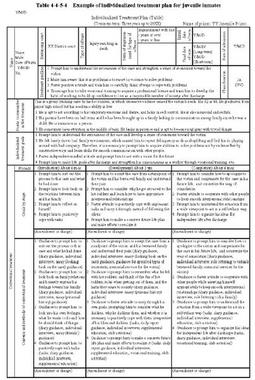| Previous Next Index Image Index Year Selection | |
|
|
2 Treatment of inmates Juvenile inmates receive treatment according to their personality based on individualized treatment plans. Table4-4-5-4 illustrates an example of an individualized treatment plan.
Juvenile inmates are to receive education according to their level of education. Education for those juvenile inmates is provided up to four hours a day,in principle,but academic education indispensable for elementary schools and junior high schools can be provided for more than four hours for those who do not complete compulsory education and it is acknowledged especially necessary. Matsumoto Juvenile Prison has a branch school of a public junior high school in the region in its site,but there were no eligible inmates in FY2004.In juvenile prisons in Morioka,Matsumoto and Nara,senior high school correspondence courses are available with the cooperation of public senior high schools in the regions.As of December31,2004,two juvenile inmates were taking such courses. Social correspondence course programs and school correspondence course programs are also available for applicants.Among overall juvenile inmates as of December31,2004,seven inmates were taking or finished social correspondence course programs,such as English,introduction to economics,bookkeeping(third grade),and hazardous material officer(Otsu4th grade)(Source:The Correction Bureau,Ministry of Justice). Furthermore,juvenile inmates are encouraged to enroll in vocational training programs.Vocational training includes welding,automobile maintenance,and electrical work,etc.Many juveniles acquire accredited qualifications and licenses or learn vocational skills. Table4-4-5-4 Example of individualized treatment plan for juvenile inmates |
